Sharlyn J. Lauby's Blog, page 44
January 12, 2023
How To Calculate Return on Investment #ROI

Estimated reading time: 5 minutes
(Editor’s Note: Today’s article is brought to you by our friends at Criteria , a company dedicated to helping organizations make evidence-based talent decisions that drive better outcomes. They recently launched a new assessment, Illustrait, which enables organizations to identify candidates with the competencies necessary to succeed in their roles . Enjoy the read!)
When you’re trying to propose a new idea, one of the questions that regularly comes up is “What’s the ROI?” Return on investment (aka ROI) is a calculation that reflects the benefit of an investment versus its cost. The basic calculation is:
ROI = Program Benefit – Cost / Program Cost
You can also multiply the result by 100 and turn it into a percentage. An example would be if a program cost $1000 to implement and would result in $10,000 of profit, then the ROI is 0.9 or 90%. While it’s important to understand the formula for ROI, there are ROI calculators available, just do a search in your favorite browser.
Sometimes instead of calculating ROI, organizations will simply look at the relationship between the cost and benefits of a program.
Benefit-Cost Ratio (BCR) = Program Benefit / Program Cost
With this calculation, if the BCR is more than one, then the benefits exceed the cost. And if the BCR is less than one, then the costs exceed the benefits. If we use the example above, $10,000 profit / $1000 cost = BCR is 10.
Regardless of whether you calculate ROI or BCR, I believe the value comes in interpreting the result. Not just calculating the number. There are three questions that need to be answered before calculating ROI.
What is a program benefit and how will it be calculated?Let’s say you’re proposing a new step in the recruiting process that will result in a better quality of hire. How will you calculate the benefit (i.e., quality of hire)? Do all the key stakeholders agree with this calculation?
I don’t want to get off track here but just as a side note, one of the great things about HR metrics is that we can be flexible with our formulas. But this can also be a downside.
For example, when I worked at the theme park, we calculated turnover for our regular full-time employees separate from our seasonal staff. Because, if we calculated them together, the numbers would be skewed. This was great because we had better data and insights. But it could be challenging if managers didn’t remember that we had two separate turnover calculations. So having stakeholders reach consensus on the calculation could be necessary.
Anyhow, back to our quality of hire example. Once everyone agrees on the benefit calculation, now we must figure out how to turn it into a dollar amount. And everyone needs to agree on that too. I know this might sound very obvious, but there are lots of organizations that don’t take the time to do this. And if the organization doesn’t know the answer, then how will they know the true benefit of the proposal they’re considering?
What is a program cost and how will it be calculated?The same principles we used for determining benefits also apply to costs. What are the costs that will be included? It may or may not be simply the program being proposed. For instance, let’s say that we’re proposing a new software program for our reskilling program and the cost is $1,000. We know that the cost of the software will be a part of the calculation.
But do we also need to think about implementation costs? What about recruiter pay and benefits? And will there be a training expense on the new software program? Some organizations might want all those additional expenses included. Other organizations might think of them as a regular operating expense that they would need to incur anyway and not include them.
Like the program benefits, if organizations don’t define what costs will be included, then they run the risk of not calculating ROI completely. Which brings us to the third definition.
What is an acceptable ROI?At the beginning of this article, we talked about the relationship between benefits and cost. It’s important to realize that a project might have an ROI of 90% and the organization might say, “That’s not enough. We need a ROI of 110% to proceed.” OR the organization might say the BCR on a project is 0.75 and give the project the green light because the cost isn’t as large as expected.
Companies need to define what acceptable ROI looks like. And it could vary based on the project. It becomes difficult to proceed with a proposal or measure the impact of a project if an acceptable ROI isn’t defined.

Return on investment is an important business calculation. It can help organizations make good decisions and it can help organizations measure the results of decisions they’ve made. But the value in ROI isn’t in just calculating the number. It’s in making sure you calculate the number completely. Using the right information. Because that allows the organization to gain the proper insights.
Speaking of insights, I hope you can join me and the Criteria team on Wednesday, January 25, 2023, at 10a Pacific / 1p Eastern for a webinar on How to Maximize the ROI of Recruitment. We will be talking specifically about calculating the ROI of recruitment.
Regardless of what’s happening with the economy, organizations want need to make fiscally responsible decisions. Knowing how to calculate ROI helps them do that.
The post How To Calculate Return on Investment #ROI appeared first on hr bartender.
January 10, 2023
Recruiting is Important Even When You Are Not Hiring

Estimated reading time: 3 minutes
I ran across a survey in HR Executive recently talking about employee retention replacing talent acquisition as top HR activity for 2023. It’s a good read to check out when you have a moment. Today, I wanted to add a little something to the conversation.
I totally understand that some organizations are being very conservative with their hiring plans right now. The thing we want to keep in mind is that even when organizations aren’t hiring per se, recruiting is still an important activity. To me, recruiting has never been one of those HR activities that becomes more important the more you do it. In fact, recruiting is always important because it drives so many other things in the company.
For instance, hiring qualified people has an impact on the training the organization does. It can also have an impact on employee engagement. And of course, it has an impact on performance. Hiring the right managers has an impact on training and development both for the manager and their teams. It also has an impact on employee retention. Oh, and yea…it has an impact on performance.
So, while recruiting might not be the activity that consumes the majority of your time, that doesn’t mean it’s less important. Which brings me to another aspect of recruiting that companies need to consider.
When I think of the definition of recruiting, I think of it as the activity that brings the right people to the right jobs within the right time frame while using the organization’s resources wisely. To me, recruiting isn’t a “get a requisition, fill a requisition” function. Recruiting should be involved helping the company create and organize jobs for maximum effectiveness.
The reason I’m mentioning this is because I recently saw a CNBC workforce survey that said 57% of respondents felt their company is overstaffed. My first question was is the recruiting function helping these organizations with an overstaffing situation? The recruiting function should be in the room with the company’s workforce plan talking about the knowledge, skills, and abilities they have and the ones they will need in the short- and long- term. The last thing a company wants to do is eliminate a position today that they will need in six months or a year. That’s the value recruiting brings to the conversation.
Every organization must examine their staffing levels to determine if they need to add or not add employees. They also need to evaluate whether reskilling or upskilling would preserve headcount and be beneficial to the operation. Any time an organization hires someone, employee retention is a priority. All these conversations are related to recruiting.
As we start 2023, this is a good time to evaluate how the recruiting function is being utilized. Is the organization making the most of their expertise? At some point, the company is going to start a full-blown hiring effort and you want them to be ready. Because we all know that if you’re behind when the talent wars start, it will be very difficult if not impossible to catch up.
Image capture by Sharlyn Lauby while exploring London, England
The post Recruiting is Important Even When You Are Not Hiring appeared first on hr bartender.
January 8, 2023
Managers Should Encourage Employee Development
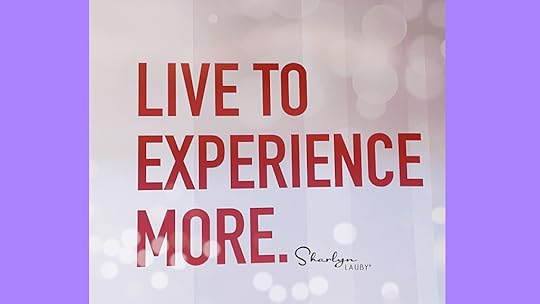
Estimated reading time: 3 minutes
I’m a fan of the Apple TV series Ted Lasso.
I’m not going to give away the story line but one of my favorite quotes from the show happens when an employee goes looking for advice on how to resign because they don’t want their boss to think they were ungrateful for the opportunity. The quote is “A good mentor hopes you will move on. A great mentor knows you will.”
The same holds true for managers.
I believe a manager’s goal should be to hire and train their replacement. If a manager wants to move up within the company, they need to have someone who is ready to take on the manager role. This doesn’t happen overnight. It takes time. And it takes employee development.
If a manager doesn’t work on training a replacement, then sadly what often happens is they get the new job and are stuck also doing their old job (until a replacement is identified and ready). Of course, no additional money. And this all happens during a time when the manager should be focused on their new role. It’s not a good situation for anyone.
Now, if the manager is happy where they are and doesn’t want to change positions, then they should still focus on team development to take on other opportunities. I’ve mentioned before about working in the hospitality industry and not wanting to relocate, so people would work at the hotel, develop their skills, gain experience, and they would move to a new opportunity.
The point being that managers should not hoard talent. They should create a situation where employees work hard, develop their skills, and move into new positions. Whether those positions are inside or outside the company. Having an employee leave for an exciting opportunity isn’t a poor reflection on the manager. In fact, it’s quite the opposite.
Yes, organizations want to retain employees. And managers want to be considered good at their jobs – so employees enjoy coming to work every day. But there’s a difference between wanting employees to have a great experience and holding them back.
With all the talk right now about the economy and the labor market, it can be very tempting to say that “we can’t afford employee development right now” or “if we develop people, they will take jobs with our competition”. Companies that don’t develop their employees will lose those employees. Because the company isn’t demonstrating that they care about an employee’s career. No one is going to stay with a company that says, “We like you. We just don’t want you to be marketable.”
Organizations want to develop employees so they will stay with the company as new positions become available. It starts with encouraging managers to develop their teams.
Image captured by Sharlyn Lauby while exploring the streets of Columbus, OH
The post Managers Should Encourage Employee Development appeared first on hr bartender.
January 5, 2023
Organizations Need to Have a Comprehensive Technology Strategy
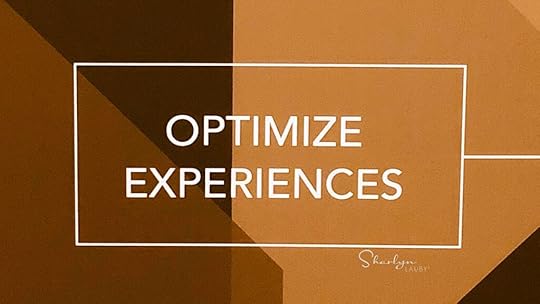
Estimated reading time: 3 minutes
As organizations are thinking about the economy and their plans to remain competitive in the market, it’s only logical that technology will enter the discussion.
Technology has a lot of advantages. It can help organizations with routine tasks. It can provide data for planning and decision making. But technology is only as good as the systems we put into place. That’s why organizations should have a technology strategy.
It’s also why organizations need to review their strategy on a regular basis. Here are a few articles about today’s technology that might get the conversation started.
Social Media Background Checks: What Employers Should Know
Organizations need to have a defined evaluation and selection process including what background screenings they will conduct. That includes having an opinion about social media background checks and the value they bring to the process.
Make the Workplace Worth the Commute
Making the workplace worth the commute isn’t just a “let’s get employees onsite” move. It should be viewed as an employee engagement strategy. One of the attributes of employee engagement is that employees actually want to get up and come into work every day. Well, if organizations make the workplace worth the trip, they’re creating an environment where employees feel connected to the company. That’s good for everyone.
The 5 Stages of Digital Maturity
Organizations need to shift their views about who owns technology in the organization. I’m not suggesting we get rid of the technology department. We need individuals to help build and maintain the infrastructure. But we also need everyone in the organization to have a certain level of tech knowledge.
Everything HR Needs to Know About People Science
Organizations have a real opportunity to strengthen their workforce and improve their business as a result. But as Dr. Wisdom mentions in this article, it takes investing in your management team. They need the tools and support to hire, engage, and retain the best people. Part of those tools and support is explaining the science behind making optimal employee decisions.
One of the things we need to remember when it comes to technology is that we’re talking about more than just hardware. Or an enterprise software solution. For example, there’s a lot of conversation in the news about whether it’s a good idea to download and use TikTok. You’ll have to make that decision for yourself. But if you have employees who use their personal devices for company business, do you need to think about questions like that? And if you do, it probably makes sense to get your legal and risk management teams involved in the conversation.
Today’s technologies are an important part of doing business. And because technology is such a huge component of our personal and professional lives, we need to make sure everyone knows how to properly use it. It starts with understanding the organization’s technology strategy.
Image captured by Sharlyn Lauby while exploring the streets of Salt Lake City, UT
The post Organizations Need to Have a Comprehensive Technology Strategy appeared first on hr bartender.
January 3, 2023
Company is Hiring for Same Job Both Onsite and Remote – Ask #HR Bartender
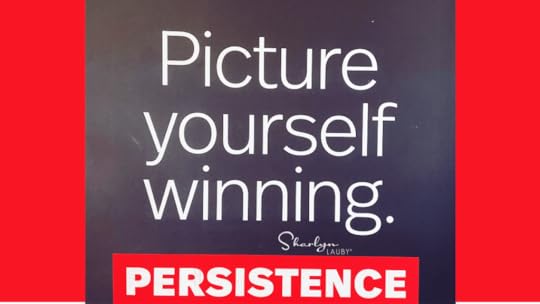
Estimated reading time: 3 minutes
Remote work is still very popular with employees and candidates. One of the challenges that organizations have to manage is when they have a job that can be done either onsite or remotely. What if someone is interested in one but not the other? That’s what today’s reader note is all about.
Hi, Ms. Lauby! I really appreciated your insight in the work-related piece on Sage.com and was wondering if you could please give me your advice. I got a great job offer for an onsite role near my home. However, the company is hiring for the same position with a remote option (which I also applied for).
I would rather work remote if possible because I have a disability, but if they didn’t want me for remote, I would still be happy to take the onsite job and do my best. Do you think it would hurt if I asked HR if I could still be considered for the remote position? Thank you for your time!
I don’t want to diminish this reader’s disclosure about a disability. According to the Job Accommodation Network (JAN), the Equal Employment Opportunity Commission (EEOC) has said that telework and/or working from home may be a form of reasonable accommodation under the Americans with Disabilities Act (ADA). We simply do not have enough information to elaborate on this aspect of the scenario.
But the circumstances of a candidate or employee finding out their onsite role can be done remotely (or vice versa), might just happen more than we think. The question then becomes what we should do about it. Here are a few things to consider.
Productivity – Candidates and employees need to ask themselves, “Where can I be my most productive?” And be able to describe it. Even if you’re not considering asking about onsite/remote work, individuals should be able to discuss the work environment that allows them to produce their best work. Preferably with examples.
Proximity – While it might be a preference to work remotely, does it make sense to work onsite for a while before asking about a transition to remote or hybrid work? This allows an employee to familiarize themselves with the onsite environment and build positive working relationships. It’s not impossible to do these things remotely, but it definitely could be easier.
Expectations – Organizations and individuals discussing remote work have to talk through expectations. Everything from equipment to data security to work schedules. Regardless of what side of the conversation you’re on, it’s important to anticipate the questions and the answers. Some of the reluctance to remote work is the perception that it’s more difficult on the employee and the company. Think about how it can be discussed as a win for all.
I understand this reader note has some unique circumstances and they will need to decide what’s best for them. I’d like to believe that, if they discussed the matter with HR, they would be able to investigate the matter and provide an explanation. Let me add, it might not be the answer that the reader is looking for, but they would get a response. Then they could decide the best way to proceed.
But I also believe that this won’t be the first time organizations advertise openings for the same job with one being onsite and the other remote. Candidates and employees might ask questions. HR needs to be prepared to offer answers that make sense. My goal is to hopefully provide both companies and individuals some things to consider when they have conversations about onsite and remote work.
Image captured by Sharlyn Lauby while exploring the streets of Washington, DC
The post Company is Hiring for Same Job Both Onsite and Remote – Ask #HR Bartender appeared first on hr bartender.
December 27, 2022
Change Management [Season 2 Bonus Episode] Changes in Pay Equity
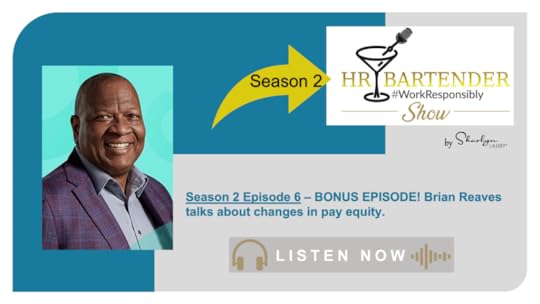
Estimated reading time: 3 minutes
One of the things that I believe organizations need to do a better job of is explaining how compensation works. I believe when employees – at any level of the organization – don’t understand their pay, it leads to distrust and impacts performance. No one wants that.
That’s why I’m really excited to share with you a bonus episode of The HR Bartender Show! I recently had a great conversation with Brian Reaves, UKG’s executive vice president and chief belonging, diversity, and equity officer about a new research report from UKG and Harvard Business Review on pay equity.
Brian brings a very interesting background to this conversation. A software engineer by trade, he conveys an “engineering mindset” to UKG along with more than 30 years of advancing diversity, equity, and inclusion within the technology industry. His previous experience includes Dell Technologies, SAP, and Xerox. In his current role, Brian leads the UKG’s global belonging, diversity, and equity efforts, expanding existing initiatives while working to strengthen a culture built on trust, fairness, and equality, so all people can thrive in their careers.

If we want to hire engage and retain the best people, we need to pay them equitably. Please note: I’m not saying organizations need to pay employees more than the market. Pay equity is about paying people with similar responsibilities the same. And not bringing factors like gender, race, ethnicity, religion, etc. into the decision-making process.
I’m also not saying that pay equity is easy. Frankly, as you’ll hear in my conversation with Brian, it’s very nuanced and complex. That’s why organizations need spend time learning about compensation and pay inequities. That will help them develop a strategy to address it.
Connect with Brian Reaves
Twitter: https://twitter.com/briankreaves
LinkedIn: https://www.linkedin.com/in/briankreaves/
During the show, we discussed a new research report from UKG and Harvard Business Review titled “Making Pay Equity Work for All”.
Season 2 Bonus Episode 6 – Brian Reaves Show Notes
Season 2 Bonus Episode 6 – Brian Reaves Transcript
Thanks for listening to our podcast. This season of the HR Bartender show is brought to you by our friends at Ultimate Kronos Group (UKG), a leading global provider of human capital management, payroll, HR service delivery, and workforce management solutions.

You can subscribe to the HR Bartender show on Apple Podcasts, Spotify, Google Podcasts, Stitcher, and TuneIn. And we would absolutely love it if you would leave a review.
If you enjoyed this episode, be sure to check out other episodes on our podcast page.
The post Change Management [Season 2 Bonus Episode] Changes in Pay Equity appeared first on hr bartender.
December 20, 2022
Do a Quick Audit of Your Labor Law Posters Before the New Year

Estimated reading time: 5 minutes
(Editor’s Note: Today’s article is brought to you by our friends at Poster Guard® Compliance Protection , a division of HRdirect and the leading labor law poster service that gets your business up to date with all required federal, state, and local labor law postings, and then keeps it that way — for an entire year. Enjoy the article!)
A few years ago, I published an article on “How to Spend the Last Two Weeks of the Year”. If you know me, then you know I’m a planner. The article is a nice reminder to spend time getting organized and ready for the new year. One of the items on the list is to do a mini audit.
And this year, you might want to focus that mini audit on labor law posters. The U.S. Equal Employment Opportunity Commission (EEOC) issued a new “Know Your Rights” poster in October and most employers are required to display this new poster at their work site.
Just as a refresher, the EEOC is responsible for investigating charges of discrimination against employers who are covered by federal anti-discrimination laws. Most employers with at least 15 employees are covered under EEOC laws. In situations of age discrimination, it’s 20 employees. Most labor unions and employment agencies are also covered. EEO laws apply to all types of work situations including hiring, wages, benefits, training, harassment, promotions, and firing. Bottom line: if you haven’t already changed out your poster, then you probably need to.
But before you just simply order the new EEOC poster, it could make a lot of sense to ensure that you’re in compliance with the rest of your labor law posters. According to Ashley Kaplan, Esq., senior corporate counsel for HRdirect, over the past year there have been more than 200 mandatory poster updates impacting U.S. employers. Here are a few areas to review:
3 Employee Groups with Unique Labor Law Posting Requirements
We tend to think of labor law postings as being just for our employees. Truth is that four of the six mandatory federal postings apply to applicants as well. There are also state and local requirements. Physical postings must be displayed for applicants who come into your office for pre-employment interviews, testing, or any part of the application process.
While I believe that most employers know they need to have labor law postings, I can also see organizations forgetting to regularly audit what they have posted. For example, in addition to labor law postings for applicants, there are requirements for remote workers as well as Spanish language postings.
Labor Law Posting Requirements for Hybrid and Remote Work
Speaking of remote work, in McKinsey’s American Opportunity Survey, 58% of respondents indicated that they work at least part of their time remotely. The continued conversation about remote work does raise the question, how do organizations communicate with employees when it comes to topics like workplace compliance postings? Organizations need to be focused on getting the work done, but they also need to make sure all employees know their rights as required by federal, state, and local law.
Different Industries Require Different Labor Law Postings
When it comes to federal posting requirements, we cannot assume that all organizations are the same. Some public-sector organizations are required to post employee notices on whistleblower protections, right to know postings, and information about electronic monitoring.
In addition, certain industries have additional posting requirements. For instance, hospitality establishments might be required to post information about alcohol service, notices for tipped employees, and cardiopulmonary resuscitation (CPR) and choking assistance information. And health care organizations might have up to 15 additional notices covering areas such as biohazard materials, radiation areas, overtime rules, and Health Insurance Portability and Accountability Act (HIPAA) Notice of Privacy Practices.
Turn Labor Law Poster Compliance into a Proactive StrategyThe good news is having a labor law posting compliance strategy doesn’t have to be complex. Organizations can partner with outside services that will handle the heavy lifting and let you know when changes occur. With Poster Guard’s Compliance Poster Service, you would receive an up-to-date federal poster, which includes the new EEO poster PLUS the other five federal mandatory posters. The service also includes all the up-to-date state and local posters for your location(s).

But to me, this is the best part – for the next twelve months, you would get new posters every time a mandatory change occurs . . . automatically with no additional cost. Poster Guard provides a 100% guarantee that the posters are compliant – or they’ll pay any government posting fine. As you’re thinking about how you want to spend your time, it could make some business sense to think about where you can create the most value for your organization.
One of the first business lessons I learned as a consultant was that just because I could do something doesn’t mean I should. Spending huge amounts of time on manual tasks keeps me from my clients. The same applies to other organizations. Spending lots of time manually tracking labor laws keeps them from their customers and employees, which has a direct impact on the bottom-line. That is a great lesson for the year ahead!
The post Do a Quick Audit of Your Labor Law Posters Before the New Year appeared first on hr bartender.
December 18, 2022
Bookmark This! Change Management Edition – The HR Bartender Show
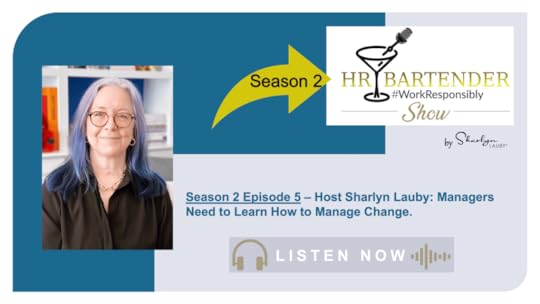
Estimated reading time: 3 minutes
In our first season of The HR Bartender Show, we talked about the future workplace and the role of technology. If you haven’t listened to it, I hope you will. The only way that organizations and individuals are going to be able to prepare for the future is by learning how to manage change, which is why we chose change management as the theme for Season Two.
In this wrap-up episode, I wanted to share my takeaways on change management, specifically the role of managers in leading the change effort. Organizations ask so much of their management teams and it’s important to give managers the support they need to effectively deal with change. In this episode, I share a couple of personal stories about managing change in my career and offer a few tips for handling change in today’s business world.

If you haven’t listened to the previous episodes in this season, here they are for easy listening:
How HR Professionals Can Manage Change with Steve BrowneHR’s Role in Managing Organizational Change with Pat WadorsSocietal Issues are Becoming HR Compliance Matters with Kate BischoffManaging an Inclusive Workplace with Sarah MorganI want to extend a huge thanks to our Season Two guests – Sarah, Kate, Pat, and Steve. I appreciate them sharing their insights and stories. One of the things we know about change is that it’s not going away. It’s wonderful to have people who are willing to share so we can all “figure it out” together.
Enjoy this season! Thank you so much for supporting HR Bartender. We appreciate you (and that’s not going to change)!
A couple of the articles I mentioned during the episode are: “Maybe Third Spaces Are the New Remote Workplaces” and “Celebrate Your Successes Through Micro Victories”
Season 2 Episode 5 – Sharlyn Lauby Show Notes
Season 2 Episode 5 – Sharlyn Lauby Transcript
Thanks for listening to our podcast. This season of The HR Bartender show is brought to you by our friends at Ultimate Kronos Group (UKG), a leading global provider of human capital management, payroll, HR service delivery, and workforce management solutions.

You can subscribe to The HR Bartender show on Apple Podcasts, Spotify, Google Podcasts, Stitcher, and TuneIn. And we would absolutely love it if you would leave a review.
If you enjoyed this episode, be sure to check out other episodes on our podcast page.
The post Bookmark This! Change Management Edition – The HR Bartender Show appeared first on hr bartender.
December 15, 2022
TRAP Agreements: Both Employees and Employers Need to Understand Them

Estimated reading time: 3 minutes
There was a recent article in the HR Brew newsletter titled “If your company pays for an employee’s training and then they quit, should they have to pay back the money?” The article talks about a TRAP (training repayment agreement provision). Basically, it’s an agreement that says the employee will repay any training costs if they leave the organization – either voluntarily or involuntarily.
In a TRAP, both the employee and employer agree in writing to the total training coursework and budget. The agreement might include a repayment schedule using a sliding scale to encourage employees to stay with the company. So, the longer an employee stays with the company after completion of the course, the less they have to pay back. There could also be a section of the agreement which designates a minimum grade requirement for reimbursement, similar to a tuition reimbursement program.
Now some of you might be saying, “You’re joking, right?!”. Sadly, no. In fact, an increasing number of U.S. companies are charging employees for job training if they quit. According to an article on Reuters, nearly 10% of U.S. workers are covered by a TRAP.
This doesn’t mean that the practice of making employees repay training costs isn’t attracting attention. Lawmakers are working with the Consumer Financial Protection Bureau (CFPB) to learn more about the practice. And some states are expanding their labor laws to require employers to cover training costs.
If you want to learn more about TRAP, I found a very detailed read on Business.com about what TRAPs are with examples and some advantages to using them. What’s interesting about this article is that an advantage of TRAPs from an employer perspective can be a huge disadvantage for employees. For instance, let’s say that an employer asks an employee to sign an agreement to repay $30,000 in training costs if the employee leaves before three years. Well, that’s good for an employer. They want to know that they’re not training an employee who will just quit once they get those new skills. And on some level, it’s good for the employee because they’re getting a commitment to training.
BUT, for employees in low-paying jobs this could force them to stay in a job that keeps them from getting ahead in their career. If an employee is faced with poor working conditions, it might prevent them from leaving. Or if an employee has a personal situation like an unexpected caregiving need, then they aren’t able to quit and take care of it. Some people are equating TRAPs to the student loan debt challenges that many individuals face today.
I titled today’s article “Both Employees and Employers Need to Understand TRAP Agreements” for a reason. Employers might want to weigh the impact of implementing a TRAP on recruitment, engagement, and retention. They should also consider having legal counsel review agreements, especially the repayment language. And make sure that any TRAP is in compliance with state labor laws including wage deduction regulations.
Employees who are asked to sign a TRAP need to weigh whether they want to work for a company that makes you repay the cost of training. They might also want to research whether the cost they are being asked to repay seems reasonable – meaning is the cost of training ridiculously expensive. And finally, it’s important for employees to understand how the repayment schedule works and what impact it would have on their paycheck.
Where TRAPs are concerned, employers and employees have a lot to think about. The best way to do that is by starting with good information.
Image captured by Sharlyn Lauby while exploring the streets of Long Beach, CA
The post TRAP Agreements: Both Employees and Employers Need to Understand Them appeared first on hr bartender.
December 13, 2022
Affordable Care Act: Good Data Practices Can Lead to Better Compliance

Estimated reading time: 5 minutes
(Editor’s Note: Today’s article is brought to you by our friends at ADP , a comprehensive global provider of cloud-based human capital management solutions. Industry analyst firm Nelson Hall recently identified ADP as a leader in both the small and medium business as well as mid to large market segments . Congrats to them! Enjoy the read.)
HR professionals over the past couple of years have been concentrating on workplace safety and health. We’ve also been very focused on employee recruitment, engagement, and retention. That’s not to say that we haven’t been paying attention to compliance, but when you’re juggling a lot, it’s easy to overlook something. Especially because compliance is complex.
For example, did you know that the Good Faith Penalty Relief provision of the Affordable Care Act (ACA) has expired? This was a provision in the ACA that allowed the Internal Revenue Service (IRS) to waive employer penalty assessments if the employer was able to provide legitimate reasons for missing an ACA compliance requirement. It was intended to help employers during the introduction of the ACA. They would be able to transition their data practices to include these compliance requirements.
You might be asking yourself, so what are the ACA compliance requirements? Well, let’s do a quick refresher on the ACA. The Affordable Care Act is a law passed in 2010 that was designed to encourage employers to provide health insurance that is affordable and offers minimum essential coverage. The law applies to organizations that have 50+ full-time employees. Under the ACA, full-time is defined as working 30+ hours per week or 130+ hours a month.
Because of the hours component and that it needs to be measured monthly by employee and Federal Employer Identification Number (FEIN), the ACA is one of those laws that requires monthly data monitoring to maintain compliance.
Back to the Good Faith Penalty Relief Provision. Since the ACA has been around for over ten years, we’re really out of the “introductory phase”. That means if an employer misses an ACA compliance requirement…well, they’re responsible for those penalties. And, if you’re thinking that the cost of penalties isn’t that much so the company can just pay them, don’t forget penalties can be shockingly high and they aren’t the company’s only expense. There are other costs associated with staying compliant, such as operational, labor, and non-labor costs. Our friends at ADP have a calculator that helps you estimate your potential ACA penalties.
5 Principles for Good Data IntegritySince the key to better ACA compliance is having good data practices in place, I thought it would be helpful to talk about the principles of good data. Here are a few things to consider:
Think about the employer and the employee. Many compliance matters impact both the employer and the employee. When designing a compliance strategy, think about maintaining compliance and the positive affect on your employees. Not only does this reduce the company’s risk but it demonstrates to employees that compliance matters, which can help to build engagement. Remember all your systems. Many organizations and HR teams work with multiple technology solutions. And that’s fine. But we must ensure that the data isn’t sending mixed messages, meaning data in one system says one thing and says something different in another. An example might be when the payroll system shows the employee has payroll hours but they have a terminated status in the HR Information System (HRIS). Create a data entry standard. When entering data, there should be a process. This isn’t just for organizations. It applies to systems like employee self-service too. People should know what flags to look for. And if something doesn’t look right, there should be a process to investigate and possibly correct the data. Don’t just enter something and hope for the best. Developing a good process will yield good results!Timing matters. Laws like the ACA have deadlines. There should be a schedule in place to review data in time for it to be submitted to the appropriate agency. For example, with the ACA, organizations should review data monthly to avoid potential penalty risk. The review schedule needs to also take into account business holidays as well as who will be responsible for submitting the data. What happens if the primary person can’t do the review? A secondary person should be identified.Regularly audit your data. All the above steps are designed to make data more accurate and reliable. But that doesn’t mean the organization shouldn’t do an occasional check to confirm it. Another thing to consider is it could be helpful to have someone who doesn’t work with the data firsthand do the audit. That will ensure an extra layer of questioning.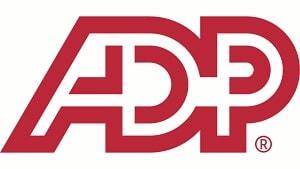 Good Data is Part of a Compliance Strategy
Good Data is Part of a Compliance StrategyHR departments are expected to maintain good data. It’s a part of the job. That doesn’t mean that we have to do it manually. Or that it needs to be time-consuming. We can maintain the data we need for compliance using modern technologies. It also helps to have a vendor relationship that will keep us informed of upcoming deadlines and requirements.
If you want to understand more about ACA penalties including what triggers them and your company’s potential exposure, visit ADP’s ACA penalty estimator. Organizations are very focused on the bottom line right now and that means being aware of potential penalties. The good news is that we don’t have to maintain compliance alone. In fact, having a partner just makes good business sense.
The post Affordable Care Act: Good Data Practices Can Lead to Better Compliance appeared first on hr bartender.
Sharlyn J. Lauby's Blog
- Sharlyn J. Lauby's profile
- 10 followers



